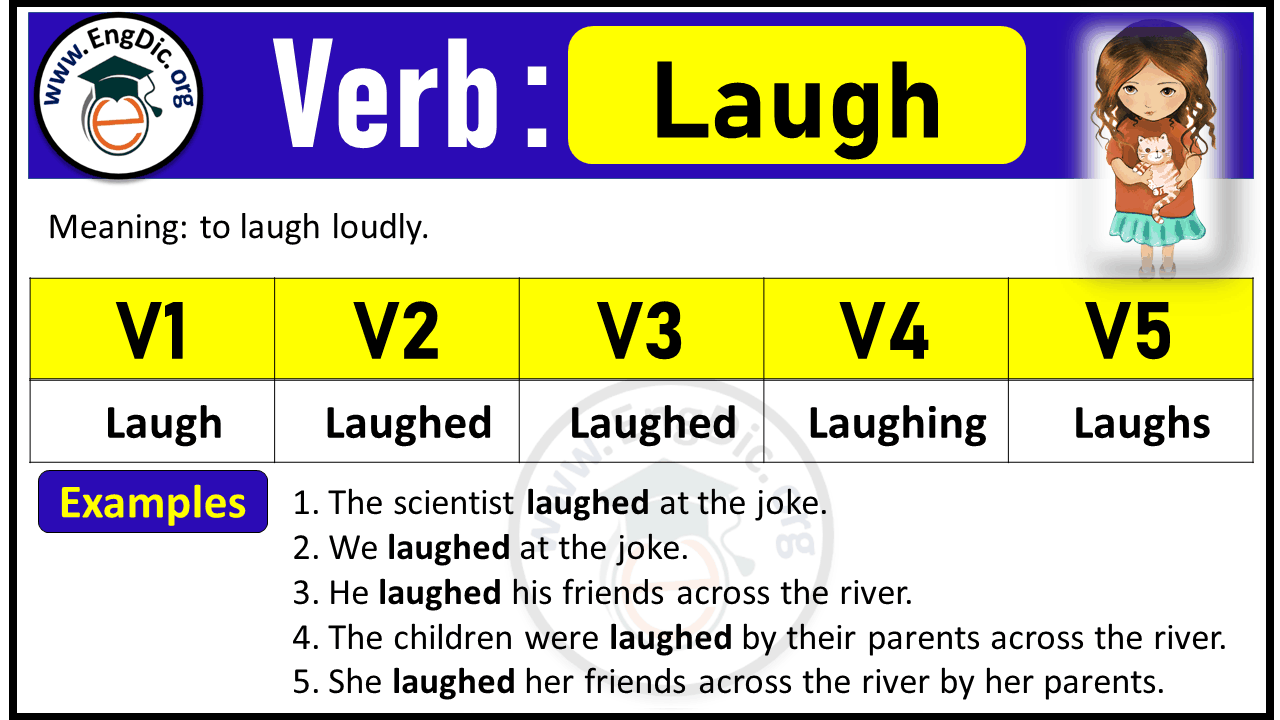Laugh Past And Past Participle Form V1 V2 V3 V4 V5 Form of Laugh
Ever found yourself puzzled over the different forms of the verb “laugh”? You’re not alone.
Understanding verb forms can often feel like trying to solve a complex puzzle. But don’t worry—you’re about to unlock the secrets behind the past and past participle forms of “laugh” with ease. Imagine how much more confident you’ll feel when you can effortlessly use these in your writing and conversations.
We will break down the V1, V2, V3, V4, and V5 forms of “laugh” so you can master them without a hitch. By the end, you’ll have a clear and simple understanding that will make your language skills shine. Ready to enhance your grammar toolkit and impress others with your newfound knowledge? Let’s dive in!

Credit: es.pinterest.com
Forms Of Laugh
The verb “laugh”is simple and fun. It brings joy to many. Its past form is “laughed”. This means it already happened. In past participle, it stays the same: “laughed”. It’s used with “has” or “have”.
For V4, it changes to “laughing”. This shows action now. Kids laugh while playing. The V5 form is “laughs”. It’s for single actions. He laughs at jokes. Understanding these forms helps in speaking and writing.

Credit: engdic.org
Usage In Sentences
The kids laugh loudly at the funny clown. He laughed at the silly joke yesterday. She has laughed at many jokes before. We are laughing at the cute puppy now. They will laugh at the magic show tomorrow.
Yesterday, she laughed at the funny movie. Last night, he laughed at the jokes. We laughed at the silly dog last week. They laughed at the magician’s tricks.
They are laughing at the clown’s tricks. She is laughing at the funny story. He is laughing at the silly cat. We are laughing at the funny dance.
She has laughed at the funny movie many times. He has laughed at the jokes before. We have laughed at the silly dog earlier. They have laughed at the magician’s tricks many times.
The kids will laugh at the magic show tomorrow. He will laugh at the funny story later. She will laugh at the silly dance soon. We will laugh at the clown’s tricks next week.
Common Mistakes
Laugh is a simple word. Many make mistakes with its forms. The base form is laugh. Its past form is laughed. The past participle is also laughed. But some say laught. This is wrong. Laugh V4 is laughing. Laugh V5 is laughs. Always use the right form. Using wrong forms can confuse. Stick to these forms for clear writing.
Some people mix laugh with similar words. This causes errors. Laugh does not change like other verbs. Knowing its forms helps. Practice using laugh correctly. This will make your writing better. Mistakes can make sentences unclear. Check your sentences for laugh forms. This is a good habit.

Credit: www.ninjacart.com
Conclusion
Understanding the forms of “laugh” boosts your English skills. Knowing V1 to V5 helps in writing and speaking. Practice these forms regularly. They enhance your grammar and communication. Simple exercises can improve your memory of these forms. Consistency is key in learning new words.
Keep practicing with sentences. This will cement your understanding. Learning English becomes enjoyable with small steps. Use these tips in daily conversations. Enjoy the journey of mastering English. Keep laughing and learning!






